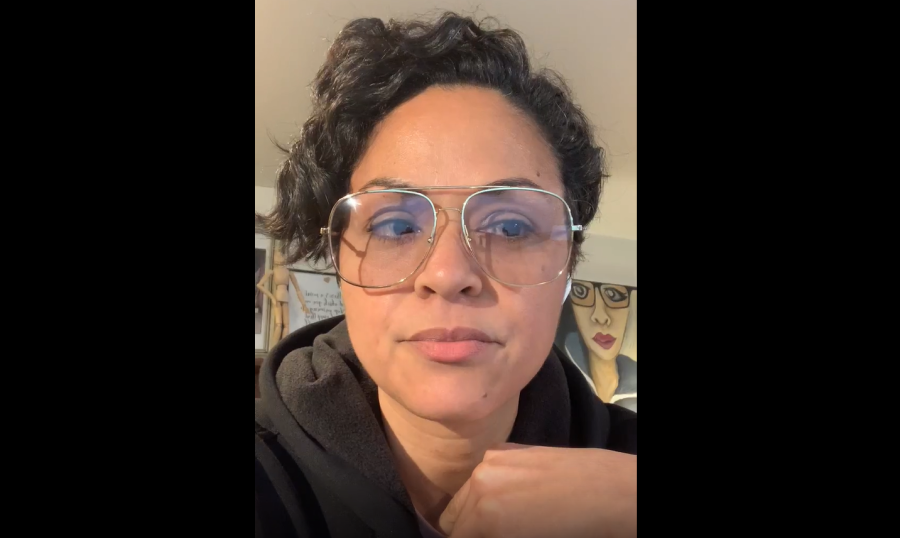Awards ceremonies are thorny, polarizing beasts. The very idea of giving out awards for art can seem like a direct contradiction of what art is meant to be. What is the value in singling out artists and their work? And why is it that performers are almost always singled out along the gender binary?
I work as the program coordinator for ArtsBridge Foundation. We are an arts education nonprofit organization based out of Atlanta’s Cobb Energy Performing Arts Centre that, among other things, produces the Georgia High School Musical Theatre Awards, the Shuler Hensley Awards. I am also an awards enthusiast: I’m fascinated by awards for many reasons, but I especially love that they are by design celebrations of art.
Of the four EGOT awards—the Emmys, the Grammys, the Oscars, and the Tonys—the Shuler Awards share the most DNA with the Tonys, both in the artistic medium we aim to celebrate and in our partnership with the Broadway League (one of the annual producers of the Tonys). We also share many of the same awards categories, including our performance awards. Since the first Tony Awards ceremony in 1947, actors have been divided by gender, though by that point, the tradition of dividing actors along the gender binary in entertainment awards was already almost 20 years old. Which invites the question: What might an awards show that more accurately reflects the world around us actually look like? Specifically, what might an awards show that rewards actors without dividing them along the gender binary look like?
At ArtsBridge, we are always working to fulfill our mission of celebrating Georgia’s high school theatre students and to become more anti-bias in all facets of our organization. As we were preparing for the current season, we took a critical look at how the Shuler Awards program can be more inclusive for all of our students. In doing this work, and after receiving multiple requests from educators over the years, we made the decision to combine the Supporting Actor and Supporting Actress awards into an expanded, non-gendered category called Supporting Performer. This category will be a permanent fixture in the Shuler Awards program beginning with our 2021-22 season.

Why do so many awards shows divide actors by gender in the first place? The answer is surprisingly simple, if deeply unsatisfying: because that’s the way it’s always been. The Oscars were the first industry award to create this template. Since their first ceremony in 1929, the Academy has given awards for Best Actor and Best Actress. Their Supporting Actor and Supporting Actress awards were introduced in 1936. It’s unclear if there was ever a specific reason for creating this delineation. Either way, both the Tonys and Emmys have followed the Oscars model since their inception, dividing actors by gender. This is inadequately representative of the diversity of the industry: In 2021, the Tonys and the Emmys nominated non-binary actors such as Karen Olivo, Carl Clemons-Hopkins, and Emma Corrin, who were categorized into either “Actor” or “Actress” based on the gender of the roles they played. As the theatre, film, and television industries inch closer to both telling stories and hiring storytellers more equitably and inclusively, their respective awards have a responsibility to recognize and reflect these shifts.
The primary, sometimes unspoken purpose of these awards shows—from the first televised broadcasts of the Oscars to last year’s “Broadway’s Back!” Tonys special—is to drum up public interest in their fields’ work. Historically, they’ve been quite successful: Over the last century, these awards shows have fundamentally changed the way American culture interacts with and consumes art. As extensions of their industries, they are constantly caught in a struggle between celebrating artistic excellence and ensuring that the work they are awarding is of interest to the public.
The Shuler Awards program is one of many smaller awards bodies that have grown in the soil tilled by the EGOTs. Unlike those awards shows, however, the Shulers are under no obligation to keep an industry afloat; our awards program exists to celebrate Georgia’s high school theatre students at the beginning of their artistic journeys and to embolden schools to advocate for their fine arts departments. The program has traditionally had 18 competitive awards categories, five of which were designed to recognize individual performers: Leading Actor and Actress, Supporting Actor and Actress, and Featured Performer. The Leading and Supporting awards were the only Shuler Awards that were divided by gender. The practice of dividing acting awards along the gender binary is not unique to our organization, but it is at odds with our mission: If we want to recognize our students’ work and growth, why do we need to force them into boxes that might not fit them?
And so our Supporting Performer Award will now be our second non-gendered performance award, the first being our Featured Performer Award. Featured Performer is specifically designed to recognize actors in smaller roles than the Leading and Supporting categories. It is also an opportunity to celebrate more students and offer them professional development opportunities, especially those who might not yet have the skill set or seniority to be cast in a major role in their schools. But by only making room to recognize students who fall outside of the gender binary in a category explicitly meant for small roles, we are inadvertently upholding the belief that non-binary students (and by extension, non-binary people) should not be afforded complex, meaningful roles onstage.
So why are we restructuring only the Supporting awards, while leaving the Leading awards as they are? As per our ongoing partnership with the Broadway League Foundation and the National High School Musical Theatre Awards (affectionately known as the Jimmy Awards), we are able to give the recipients of Leading Actress and Leading Actor a rich opportunity to work on their craft, to make connections with and learn from high-level industry professionals, and to be recognized for their work on a national platform. According to the Broadway League’s current policy, if a non-binary or gender-fluid actor were to compete at the Jimmy Awards, they “may choose to either select the category in which they wish to be adjudicated…or they may be adjudicated based on the gender of the role they played.” To continue being able to offer this professional opportunity to our students, we are required to keep the Leading Performer categories divided. This division is not representative of the diversity of the local and national theatre community, nor is it representative of the possibilities for greater inclusivity in musical theatre. Each regional awards program has the freedom to tailor their other awards to best serve their communities, so we are using this as an opportunity to reimagine the ways we can best celebrate our students regardless of their gender.
How can we be sure that an expanded non-gendered acting award will matter to our students? Well, we can’t be entirely sure until we try it. Inclusivity requires an active, ongoing commitment from industry leaders (including ArtsBridge Foundation and the Broadway League) to dismantle the system that allows the industry to uphold inequity in the first place. In many ways—in the kinds of stories that are told onstage and on screen, in which actors are allowed access to additional creative opportunities as directors, writers, and producers—the entertainment industry both reflects and perpetuates the biases in our culture. Awards are not given in a vacuum. Despite our mission to celebrate each and every student and high school theatre program in the state, in perpetuating our gendered awards categories, we have effectively excluded any students who fall outside of the gender binary.

According to a recent study from the Trevor Project, 26 percent of LGBTQIA+ youth identify as non-binary, with an additional 20 percent questioning whether or not they identify as non-binary. The results come from an online survey conducted October to December 2020, completed by over 34,700 LGBTQIA+ youth. According to Jonah DeChants, a research scientist involved with the Trevor Project, “More and more young people are taking control over their gender identity, and finding language and terms that resonate with them and expressing that in the world in [ways] that we haven’t necessarily seen in the past.” Most of the individuals who identify as non-binary use pronouns outside of the gender binary, like “they/them” or “xe/xem.”
Over the last decade, LGBTQIA+ experiences and issues have come into much sharper focus in the mainstream cultural landscape. From the national legalization of gay marriage in 2015 to increased queer representation onscreen, stage, and in politics, the 2010s saw multiple LGBTQIA+ milestones. It was in this cultural environment that the oldest members of Gen Z, the current demographic of students who participate in the Shuler Awards, grew up.
In addition to the Supporting Performer award, we’ve started soliciting pronouns for every member of a production’s cast and creative team on the Shuler Awards Director’s Application. As the Trevor Project emphasizes in the same study, “Respect for pronouns is correlated with a decrease in attempted suicide, and is associated with a real increase in quality of life and mental health for young people.” DeChants goes on to note, “Sometimes folks in that affirming position, like teachers, coaches, or parents, don’t always understand the impact that we’re having on a young person in that moment…That is a key takeaway for me: that we can all be that person who provides that respect and affirmation for the trans and non-binary people in our lives.”
At ArtsBridge, we take our responsibility to our students seriously. We want to be DeChants’ “voice of affirmation” to ensure that every student feels supported and cared for during their time participating in the Shuler Awards program. We are committed to making the Shuler Awards a more accessible space for all of our students. Cultivating that space will continue to be a key component in fulfilling our mission. High school is a profoundly formative time for young people: Every day is another opportunity for them to unlock and understand their most authentic selves. While theatre has historically been a haven for the LGBTQIA+ community, especially in education, it’s important to remember that each individual’s relationship with their gender is an ongoing journey. Regardless of where people are on that journey, we want to create an environment that embraces and destigmatizes all shades of the LGBTQIA+ experience.
As we prepared to implement this new category for the current season, one of our primary concerns was whether it would unconsciously reinforce gender biases, such as disproportionately rewarding cis boys over cis girls (let alone trans and gender nonconforming students). To try addressing this, I did some research to see how this expanded category would have looked over our last three seasons. Without revealing any confidential data, the last three seasons would have seen an even balance in nominees between students previously categorized in Supporting Actress and Supporting Actor. There was a consistent balance in the six hypothetical recipients as well. This, of course, doesn’t necessarily mean the nominations will always shake out so neatly: In the coming years, as this new category finds its footing, we will continue to monitor its adjudication process with the Shuler Advisory Committee to prevent further bias.
The current system reifying the gender binary has and will continue to prevent us from fully meeting our objectives to serve our students. As educators, we must do all that we can to dismantle this oppressive system and lay the groundwork for a more equitable industry and a more equitable world. This sounds daunting, but it’s the right thing to do, and our expanded, non-gendered Supporting Performer category is the right first step toward that goal.
We are not the only regional awards program under the Broadway League partnership to implement a change like this, but there are relatively few of us in the grand scheme of things. We thus have the chance to lead the field, and, under the leadership of executive director Jennifer D. Dobbs, former director of arts education Angela Farr Schiller, Ph.D., and new director of arts education Elizabeth Lenhart, we are seizing it. Notably, many of the other programs implementing non-gendered performance awards are based in states from the South and the Midwest, like the Dallas Summer Musicals High School Musical Theatre Awards in Texas, the Broadway Star of the Future Awards in Florida, the Spotlight Education Awards in Minnesota, and the Iowa High School Musical Theatre Awards.
It is not lost on me that this is a rich opportunity to prove to the national theatre community that Georgia, just like these other states, is a fertile ground for quality arts education and theatrical innovation. It’s a reminder that change can start in school auditoriums or gyms or cafeterias, not just in the academies. Even more importantly, this is an opportunity for us to unapologetically remind our students that they—all of them—are welcome here.
Elliott Folds (he/him) is a dramaturg, actor, musician, and producer based in Atlanta. He currently works as program coordinator at ArtsBridge Foundation.


